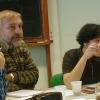Ключевые шаги модели "клещи":
-формулировка Исходной ситуации;
-формулировка наиболее желаемого результата;
-формулировка барьера и переформулирование барьера как противоречия;
-формулировка решения с помощью зрения здравого смысла;
-проверка решения с помощью НЖР, при необходимости - повторение цикла. (по статье Н.Хоменко, Дж.Кук. Решение изобретательской задачи с использованием модели из ОТСМ-ТРИЗ «КЛЕЩИ»)
Types of materials
Archive & web-site
News
03/27/2018 - 08:50
03/27/2016 - 01:15
12/09/2014 - 11:25
01/16/2016 - 16:08
01/16/2016 - 14:32


Recent comments
12 years 39 weeks ago
13 years 39 weeks ago
13 years 39 weeks ago
13 years 39 weeks ago